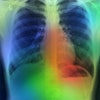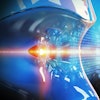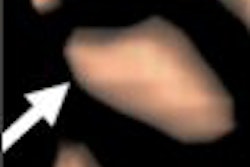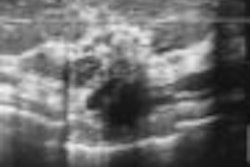By adding computer-aided detection (CAD) to its mammography exams, a team from a Salt Lake City-based institution found that it was able to boost cancer detection without a significant increase in the recall rate. The group discussed its CAD experience in a poster presentation at the 2007 San Antonio Breast Cancer Symposium in San Antonio.
For this year-long study, Braden Rowley and colleagues tracked mammographic findings in 43,175 patients screened (M-IV Series, Hologic, Bedford, MA) at four Intermountain Healthcare breast centers. Rowley is the data manager for oncology clinical programs at Intermountain Healthcare.
Each mammogram was initially interpreted without CAD, and the reading radiologist assigned a BI-RADS category. The mammograms were immediately re-evaluated with CAD (R2 CAD, Hologic). The radiologist then re-evaluated each case, taking the CAD marks into account. Each recalled case was classified into one of three categories:
- Findings noted by radiologist and CAD system
- Findings noted by radiologist only
- CAD findings that prompted radiologist to recall
According to the results, a marginal increase to 10.85% from 10.71% was seen in the recall rate over the one-year period, but this difference was not statistically significant, the authors noted. Of the more than 43,000 patients, 4,685 were recalled for additional imaging and 16% of those patients underwent biopsy. At biopsy, 190 cancers were diagnosed. Based on CAD results alone, 153 patients were recalled, leading to the diagnosis of seven additional cancers that would have been missed without CAD.
"Interestingly, six of the seven cancers found by the computer alone were in women age 45 to 54, where dense breast tissue may have played a role in masking the abnormalities from the radiologists," Rowley said.
"The implementation of the computer-aided detection system at Intermountain Healthcare facilities in 2005 resulted in the detection of seven early-stage malignancies, which would otherwise have been missed," Rowley reported. "In as much as this did not result in a significant increase in the recall rate, the introduction of computer-aided detection technology did not impose an undue clinical burden on the system."
By Edward Susman
AuntMinnie.com contributing writer
January 22, 2008
Related Reading
CAD systems differ in detecting small noncalcified breast masses, October 5, 2007
Breast CAD results vary based on mammography view, August 6, 2007
Studies show CAD matches up well with CR mammo, FFDM, May 24, 2007
Copyright © 2008 AuntMinnie.com



















